Livery number #1


_1920x1600?width=1920&height=1600)
The F12berlinetta’s 200-bar, direct-injection 6262 cc 65° V12 delivers absolutely unprecedented performance for a naturally aspirated 12-cylinder engine in terms of both power and revs.

Maximum power is 740CV for a specific output of 118CV per litre and 690 Nm of torque. 80 per cent of that torque figure is on tap from 2500 rpm, giving massive acceleration right the way up to the 8700 rpm red line. Just like Ferrari's F1 engines, the V12 boasts very low levels of inertia to ensure that the engine revs rapidly. Development concentrated on a number of areas, including the compression ratio which has been increased to 13.5:1.

The lower crankcase was completely redesigned to help reduce the car's centre of gravity (the engine sits 30mm lower and further back in the chassis compared to the 599 GTB Fiorano). The V12 feeds power to the rear wheels through the dual-clutch F1 transmission which gives instantaneous gear shifts.
The transmission features close gear ratios developed specifically to suit the car's performance and is integrated with the electronic E-DIFF to reduce overall weight. Internal friction losses have been reduced to a minimum and innovative technologies have been employed (such as the multi-spark ignition function which implements three successive sparks of different intensity and duration) to reduce fuel consumption by 30 per cent compared to the 599 GTB Fiorano depsite the increase in power and torque.


No fewer thab 12 different types of alloy have been used, including two new structural alloys.This has helped keep the car’s weight down (50 kg has been saved on the body-in-white alone which equates to a saving of 90 kg if the previous chassis were re-engineered to meet crash legislation) and maximise the efficiency of its performance (torsional rigidity has been increased by 20 per cent).
Crash resistance (lateral pole impact and roof roll-over) is already in line with future legislative requirements and particular attention was taken during the design phase to improving production quality, and minimising repair times and thus costs for the client.

The F12berlinetta delivers truly extraordinary performance and driving involvement thanks to its highly evolved transaxle architecture which was developed with extremely ambitious objectives in mind. These were to reduce overall weight, lower and move the centre of gravity rearwards in the chassis, and reduce the car’s frontal area whilst contemporaneously increasing passenger and luggage space compared to the previous V12 coupé to ensure maximum comfort over lengthier journeys. To achieve these objectives, the engineers lowered the engine, dashboard and seats.
Furthermore the rear of the car is now more compact, thanks to the repositioning and reduction in size of the fuel tank (permitted in part by a more efficient engine which delivers the same range as before) and to the new transaxle layout allowed by the rear multi-link suspension and F1 dual-clutch transmission with integrated electronic differential.
Rather than a traditional separate boot, the F12berlinetta features a generous tail-gate incorporating the rear screen which contributes both to the compactness of the design, and the generous luggage space and its accessibility, while ensuring maximum structural rigidity. This solution also ensures that more of the car’s mass sits inside the shorter wheelbase to the benefit of handling dynamics.
The end result is a car that’s lighter by 70 kg with a centre of gravity that’s 25 mm lower. It’s also shorter (-47mm), lower (-63 mm) and narrower (-20 mm) compared to the previous V12 coupé. The rear overhang has been greatly reduced (-82 mm) while the front one has been estende (+65 mm) to accommodate the cooling systems required for the powerful V12 engine. Weight distribution is ideal - 54% at the rear – and is unmatched by competitors within the segment.




The F12berlinetta's aerodynamics were developed hand-in-hand with its styling, using CFD (Computational Fluid Dynamic) simulations along with more than 250 hours of testing in the Ferrari Wind Tunnel. Research focused not only external air flows but internal ones too.

The F12berlinetta’s exceptional aerodynamic efficiency is the product of a series of innovative features. The first of these is the Aero Bridge, an innovative solution that uses the bonnet in downforce creation for the first time.
Equally, air passing over the upper part of the car is drawn into special air intakes in the rear wings, altering the pressure in the wheel well, before exiting through the Blown Rear Diffuser.
The car’s flat underbody has also been significantly evolved. The front splitter is now separate to the bumper, in fact, and this generates downforce whilst simultaneously directing the air flows towards the rear extractor, improving efficiency. The generous rear diffuser and its four fences contribute to the significant increase in downforce too.
The active brake cooling system also reduces drag. Its system of guide vanes on the brake air ducts opens only in certain conditions, such as, for instance, if brake operating temperatures are high enough. When it comes to integrating fluid dynamics and thermal management, however, the central air vent on the bonnet boosts the efficiency of the cooling system and also helps lessen the impact of the air on the windscreen at high speeds, creating a cushion that deflects the natural air flow.
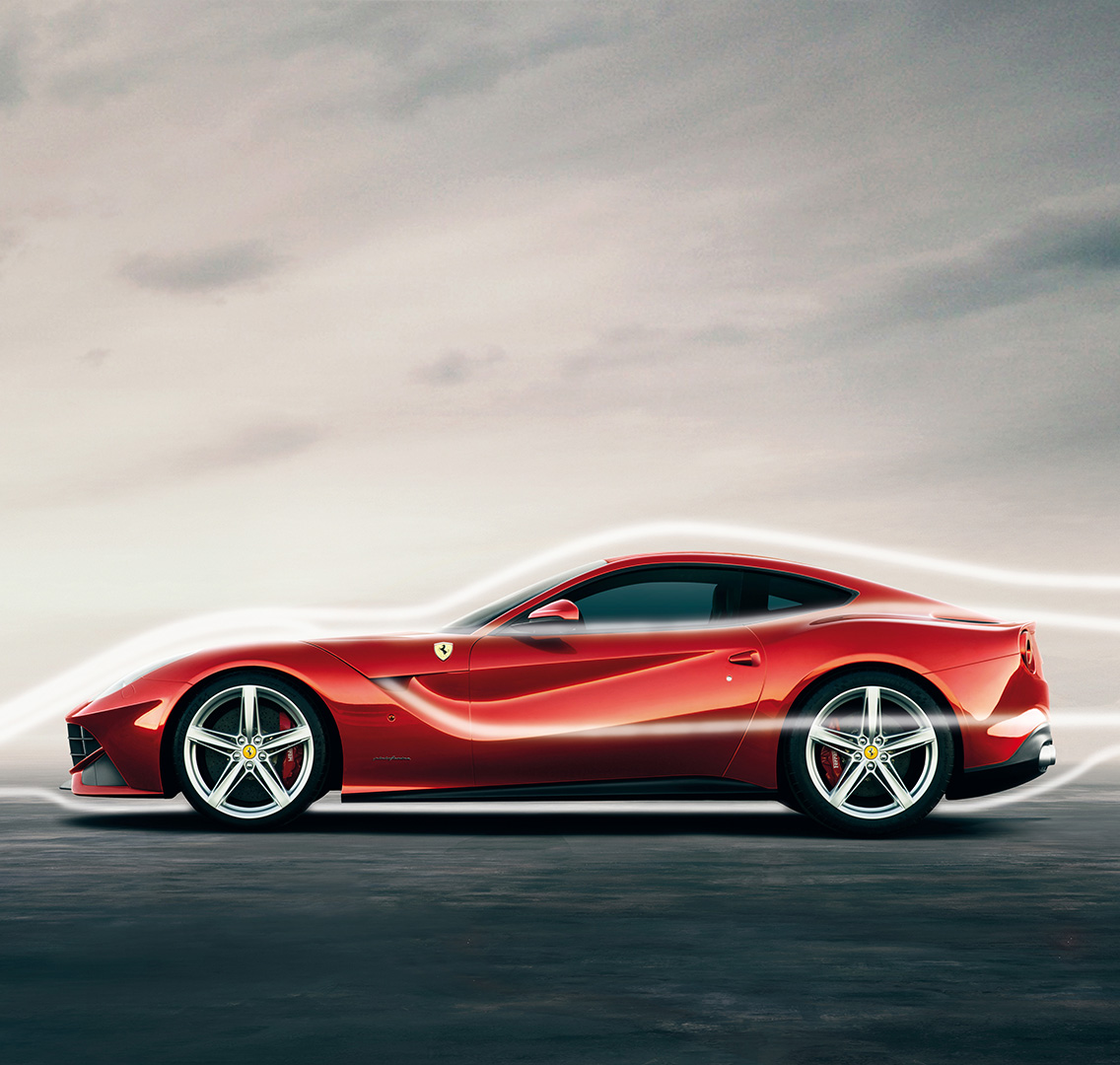

On top of pure performance figures it is also incredibly fluid and intuitive to drive, thanks to its unique handling which inspires confidence at all speeds, not just on the limit on the track. This was achieved thanks in great part to the development work carried out on the layout which has helped the car take a massive leap forward in terms of agility and responsiveness, even at slower speeds, a characteristic more in keeping with mid-rear-engined cars until now.

In addition to this, however, all the car’s sub-systems were developed and integrated with each other specifically to achieve these goals without compromising on high standards of occupant comfort. The latter include springs and dampers, wheels and tyres, yaw control systems, such as the E-Diff, traction control (F1-Trac), Stability Control (ESC), and auxiliary braking systems, such as ABS/EBD, which work in coordination to transfer torque in the most intelligent and efficient way possible to get the most out of the performance available.
The new carbon-ceramic braking system (CCM3) benefits from the latest developments, including a new material mix for the rear pads and an optimised cooling system derived from Ferrari’s F1 experience, along with the Active Brake Cooling at the front. Combined, these improvements eliminate fade and deliver excellent stopping distances (131 m from 200 km/h, an impressive 7-metre improvement on the 599 GTB Fiorano).
It also sports the new SCM-E magnetorheological dampers which have twin solenoids and a new ECU with upgraded software. The system uses a fluid whose viscosity is altered by an electronically-controlled magnetic field generated inside the damper. This in turn translates into faster response times and more precise bump control which improves both performance and ride comfort.


The F12berlinetta’s design strikes the perfect balance between maximum aerodynamic efficiency and the elegant proportions typical of Ferrari’s front-engined V12 cars. Its designers and engineers worked in tandem to sculpt its surfaces so that they seamlessly incorporate the car’s many innovative aerodynamic solutions by “subtraction” rather than having it bristling with different appendages.
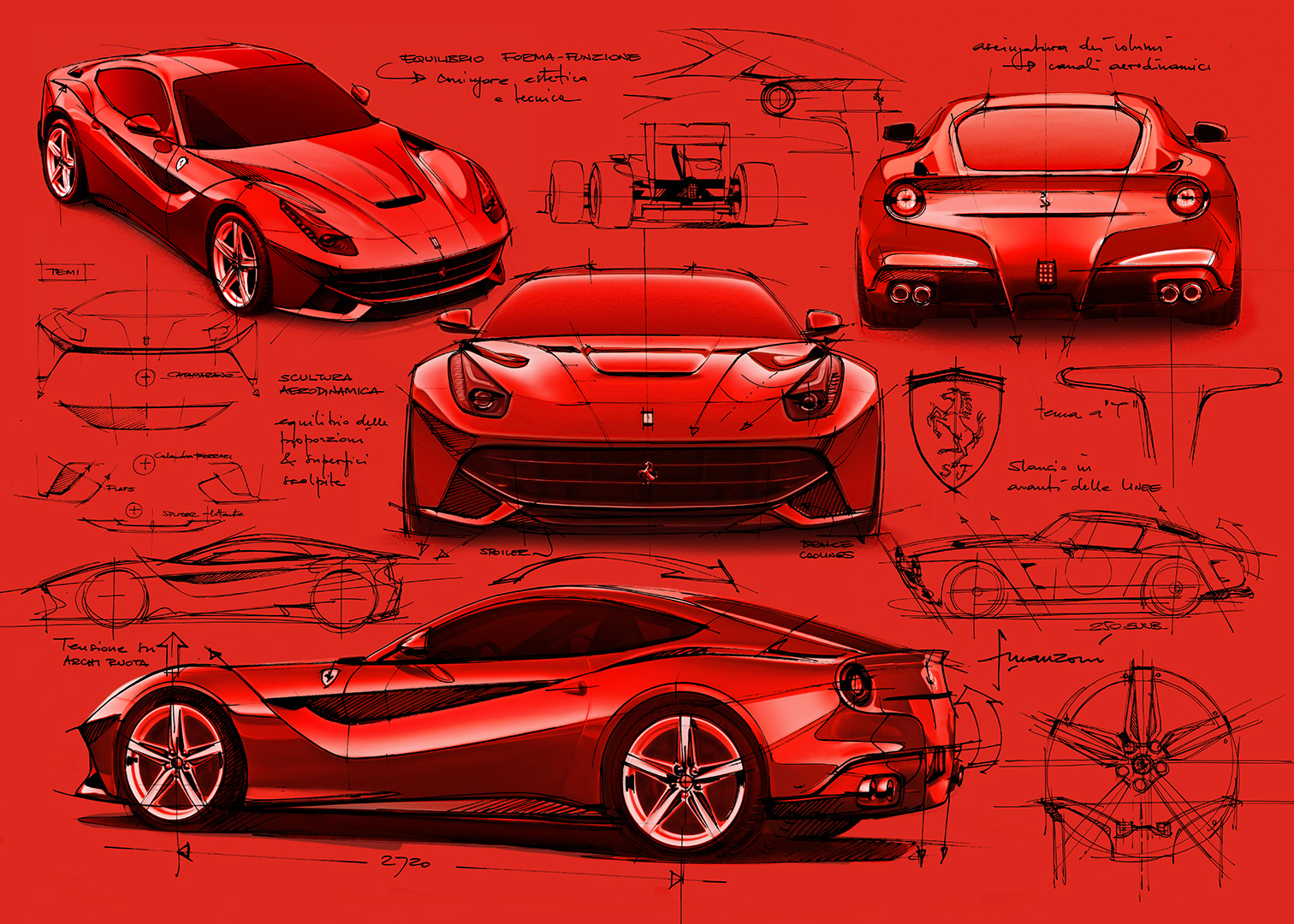
The result of this collaboration is an innovative system of air flows which make this car absolutely original and unique, a true marriage of technology and aesthetics, an essential requisite for all Prancing Horse cars in which form and function are inextricably linked.
The F12berlinetta has low, sleek coupé lines with powerfully sculpted flanks whose contours curve and dip to channel the air flows from the bonnet.The two aerodynamic channels, created by reducing the volume between the wings and central bonnet bulge, pass below a bridge in the area between the front wheelarch and the bottom of the A-pillar, before flowing into scoops in the flanks, lifting and lightening the car’s side volume.
The front of the car is dominated by an imposing grille that draws air into the engine bay to cool the V12. On either side of it are electronically-controlled guide vanes which help cool the brakes. This is an original, active aerodynamic solution as when closed they cut drag and when open guarantee optimal brake cooling.
The rear of the F12berlinetta is characterised by a modern, functional reinterpretation of the Kamm tail which seamlessly integrates the two vertical fences of the rear diffuser. The resulting original T-shape also incorporates two full-LED circular tail-lights and the clearly F1-inspired rear fog light.
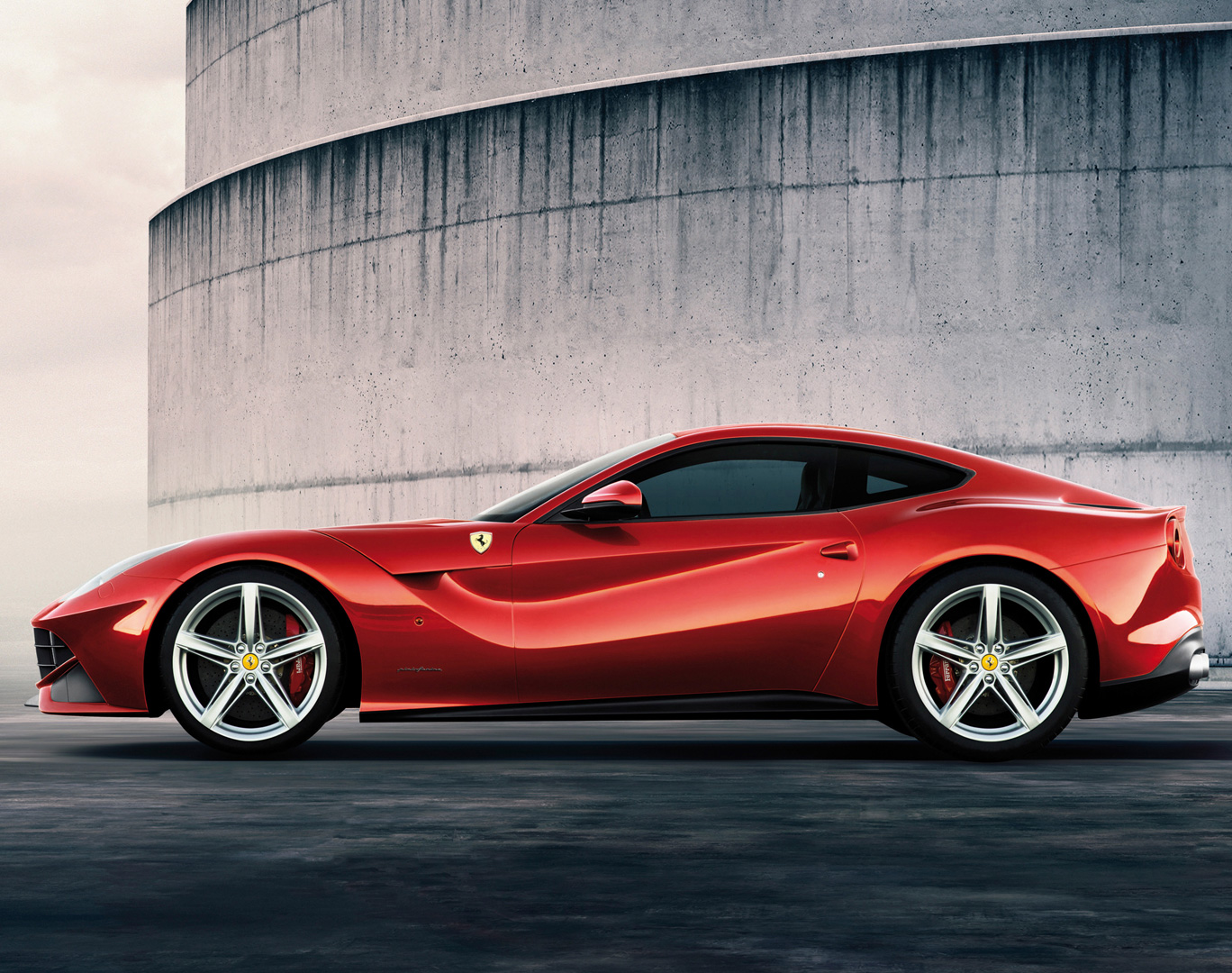

The design’s strongest feature is the logical, ergonomic layout of the various functions within the cockpit: light and essential architecture embraces and enhances the Human Machine Interface, which places all the major controls on the steering wheel, and displays all the main information in the main binnacle straight ahead. The elimination of the indicator stalks and the clustering of all driver commands on the steering wheel underscore the car’s link to the world of racing. More ergonomically efficient F1 paddles and the fact that the driver can reach every single control with his hands firmly on the steering wheel rim ensure maximum performance is achievable in any driving condition.
The dashboard is dominated by air vents of a new and innovative design. Of aeronautical inspiration, they are compact and are made from carbon-fibre and aluminium alloy.
An optional display is available for the passenger-side dash and keeps the passenger actively involved in the whole driving experience. The tunnel console is both light and functional.
The central bridge incorporates the F1 gearbox and hazard warning light buttons, and is one of the cabin’s signature elements. Below it is an Alcantara®-lined oddments storage space and there is also a cup-holder. The tunnel console is completed by a longitudinally adjustable armrest which is hinged at the side to facilitate access to the storage compartment beneath where there is also a convenient USB port.

The F12berlinetta’s door panels have a fluidly dynamic line and again are designed around the logical arrangement of their main features: armrest, door handle, tweeter, speaker, airbag and leather pocket. The panel’s central trim section allows ample scope for personalization in terms of both finish and materials. Options include aluminium borders designed to underscore the panel’s characteristic lines.
The F12berlinetta’s Racing manettino puts the emphasis on sporty driving on high grip surfaces, offering drivers ample scope to adjust the electronic control system settings. On the dashboard, the right-hand satellite pod features the controls for the corresponding TFT screen which displays infotainment information.
It is also used to control the sat nav, stereo with audio streaming via Bluetooth, voice-activated track, artist, album and song title selection. It is also possible to use a smartphone to connect to internet to listen to web radio, podcasts and download Apps.
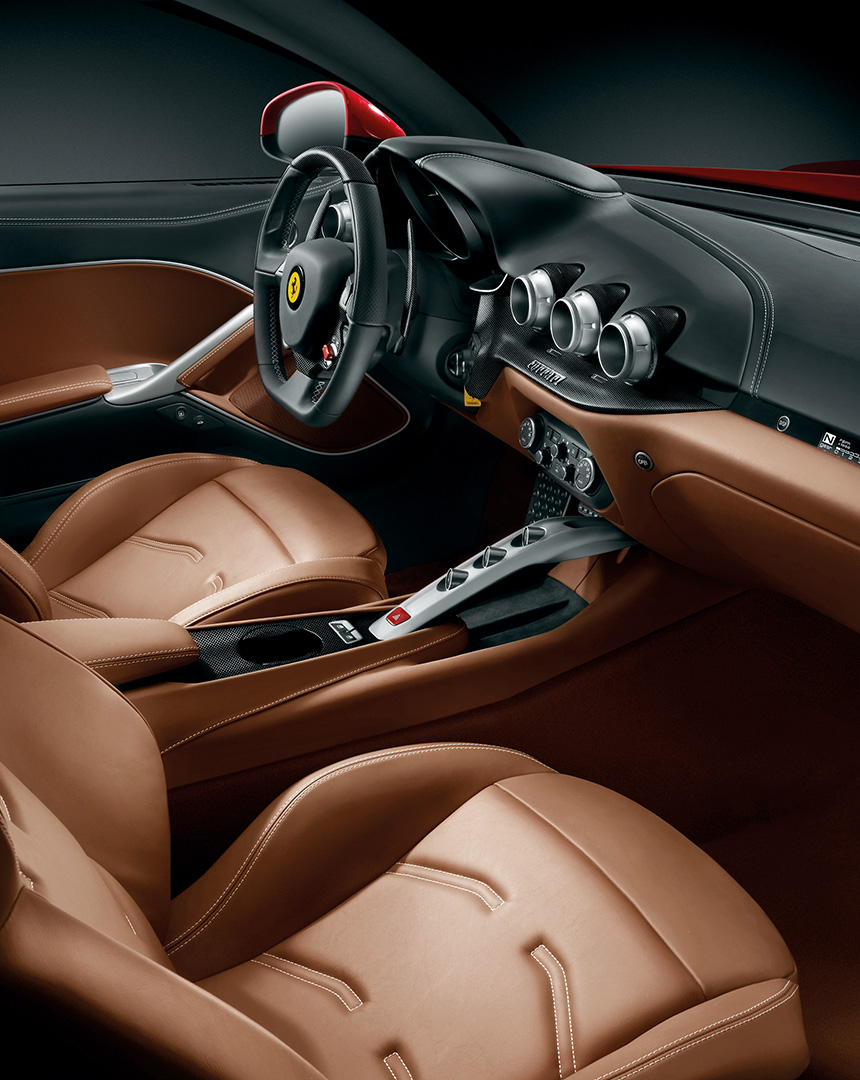
When activated in the RACE, CT-Off and ESC-Off manettino modes, it makes driving even more involving, as well as safer, by keeping the driver informed of the optimal conditions for the car at all times.
A special algorithm estimates the car’s status (brake, tyre and engine temperature) on the basis of various dynamic parameters (lateral acceleration, longitudinal acceleration, speed, engine revs). It will then alert the driver to the aforementioned conditions using the following messages:
WARM UP
(FURTHER WARMING UP OF THE COMPONENTS REQUIRED);
GO
(OPTIMAL CONDITION FOR MAXIMUM PERFORMANCE);
OVER
(OVERHEATING, COMPONENTS MUST BE ALLOWED TO COOL).
The main objective with the F12berlinetta’s seats was to reduce their volumes as much as possible to ensure freer occupant movement within the cabin while, at the same time, ensuring they are extremely comfortable and respect lateral containment geometries. The headrest is fully integrated into the backrest, giving the seat a very modern, track-inspired feel. The rear of the cockpit features an upholstered rear bench with leather luggage straps to hold bags securely in place. Occupant space is generous indeed – the seats are comfortable for individuals up to 1.95 m (6’4”) – as is the boot (320 litres). Luggage space can be increased to up to 500 litres by lowering the rear bench panel, which makes the F12berlinetta ideal for longer journeys in the company of a passenger.
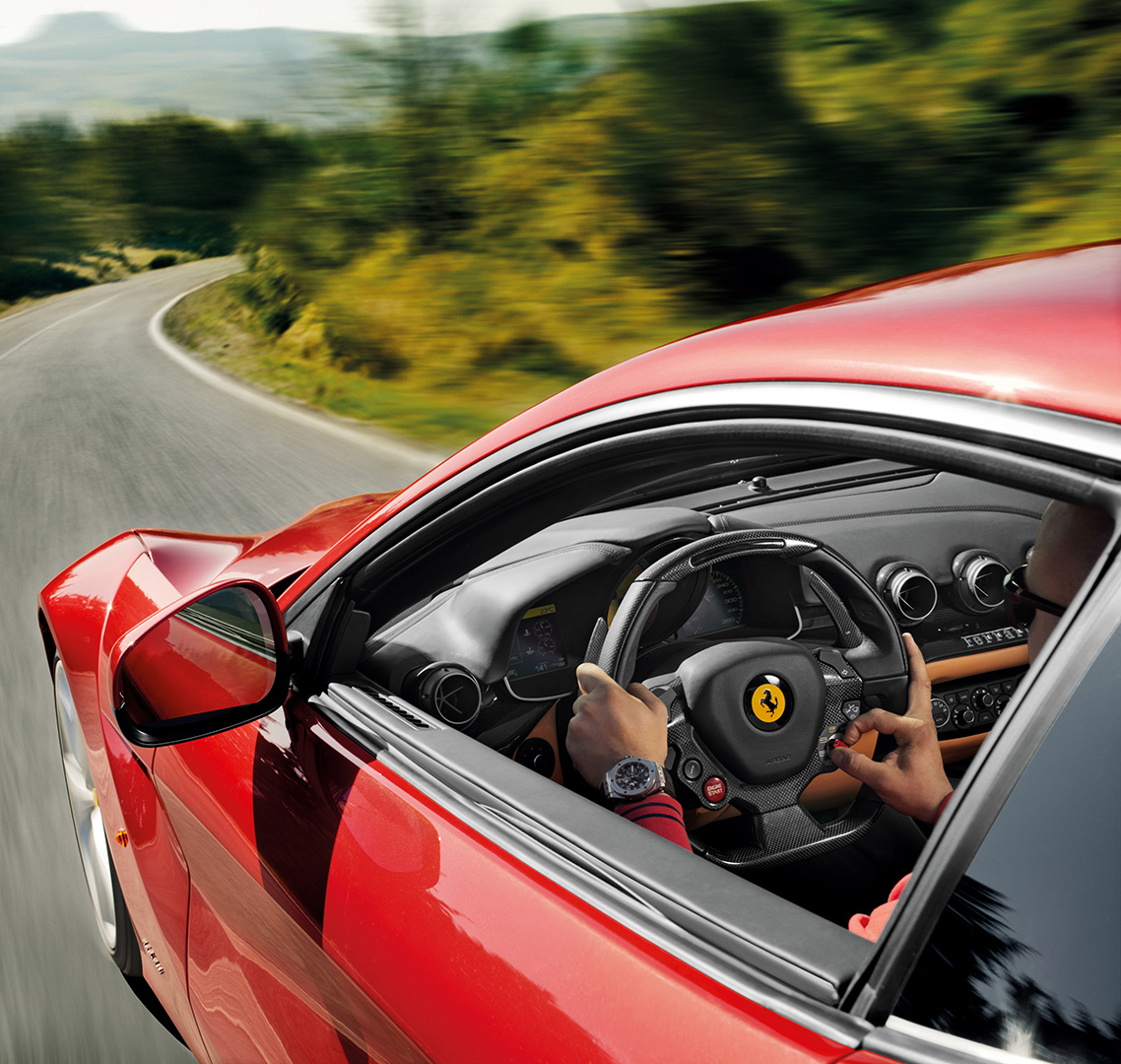

Volumes have been reduced to a minimum to enhance sportiness and efficiency. The interior space has been optimised to provide both a sporty driving position as well as guarantee maximum comfort. A perfect balance has been struck between advanced technologies and sophisticated, beautifully hand-executed detailing, both of which are intrinsic to Ferrari’s DNA.
The design's strongest feature, however, is the logical, ergonomic layout of the various functions within the cockpit: the essential architecture embraces and enhances the Human Machine Interface which allows the driver to reach all of the controls without taking his hands off the steering wheel and displays all of the information he requires directly ahead. The tunnel console is both light and functional. The central bridge incorporates the F1 gearbox and hazard warning light buttons, and is one of the cabin's signature elements.







































_800x600?height=750)
